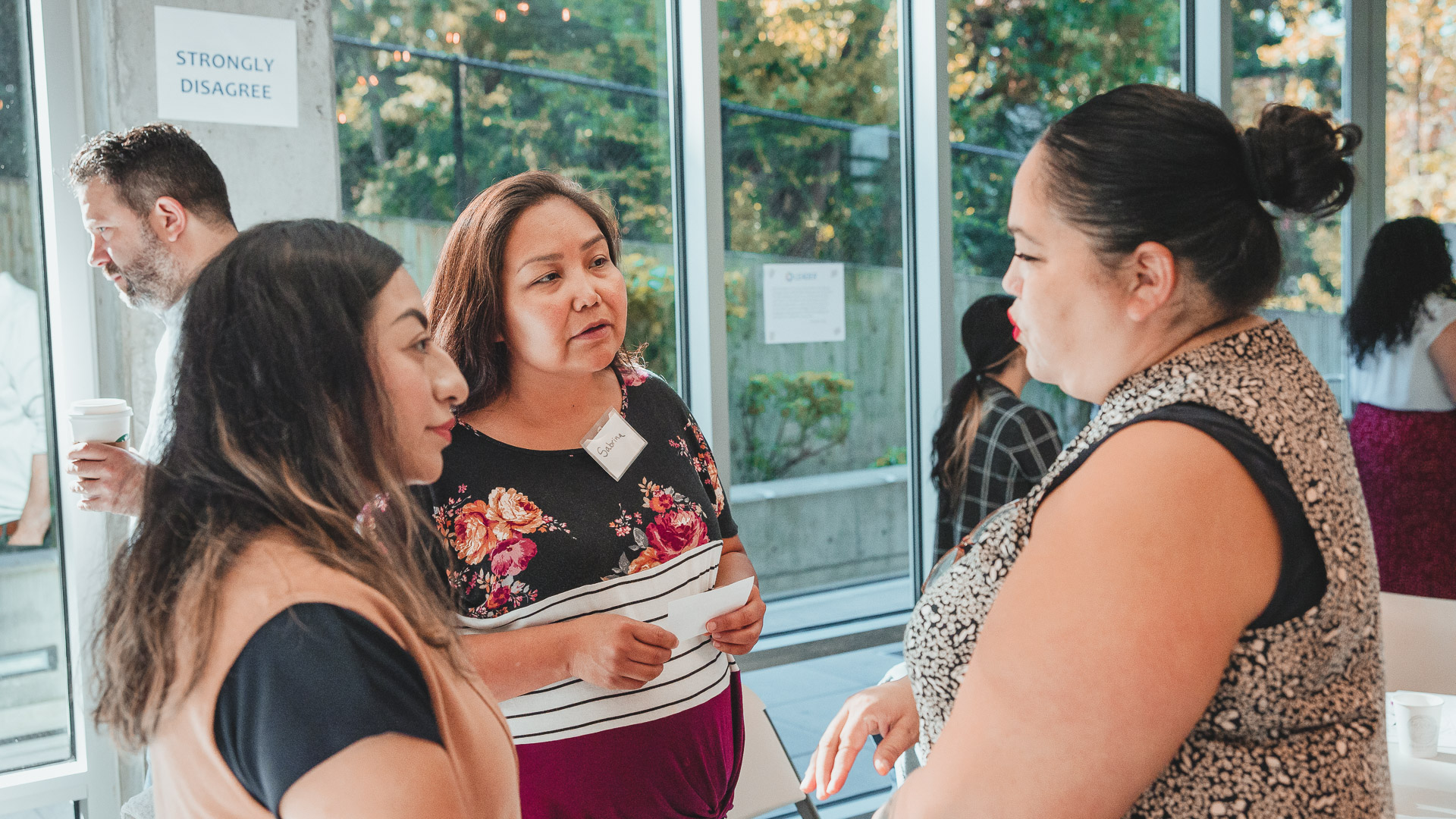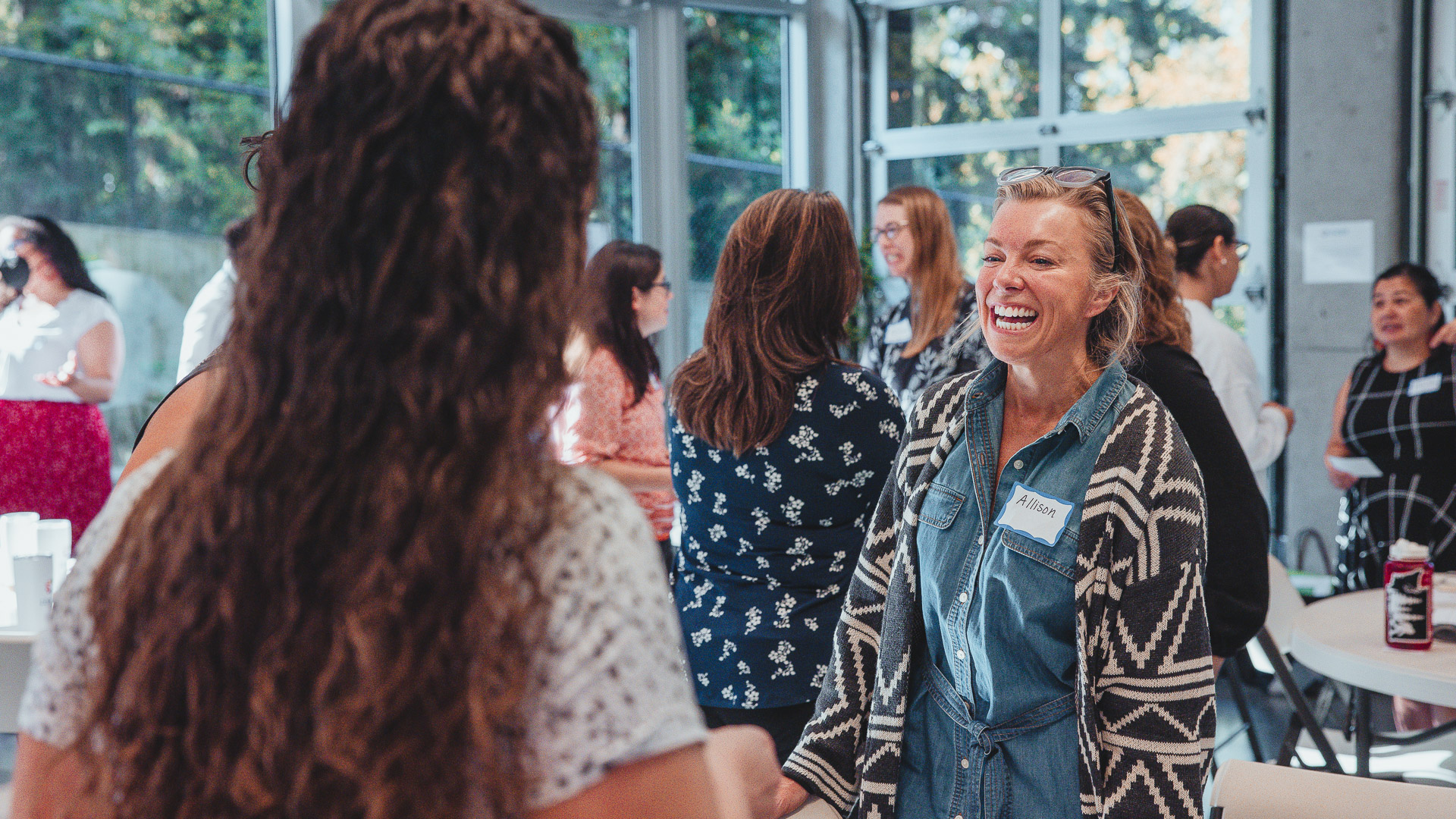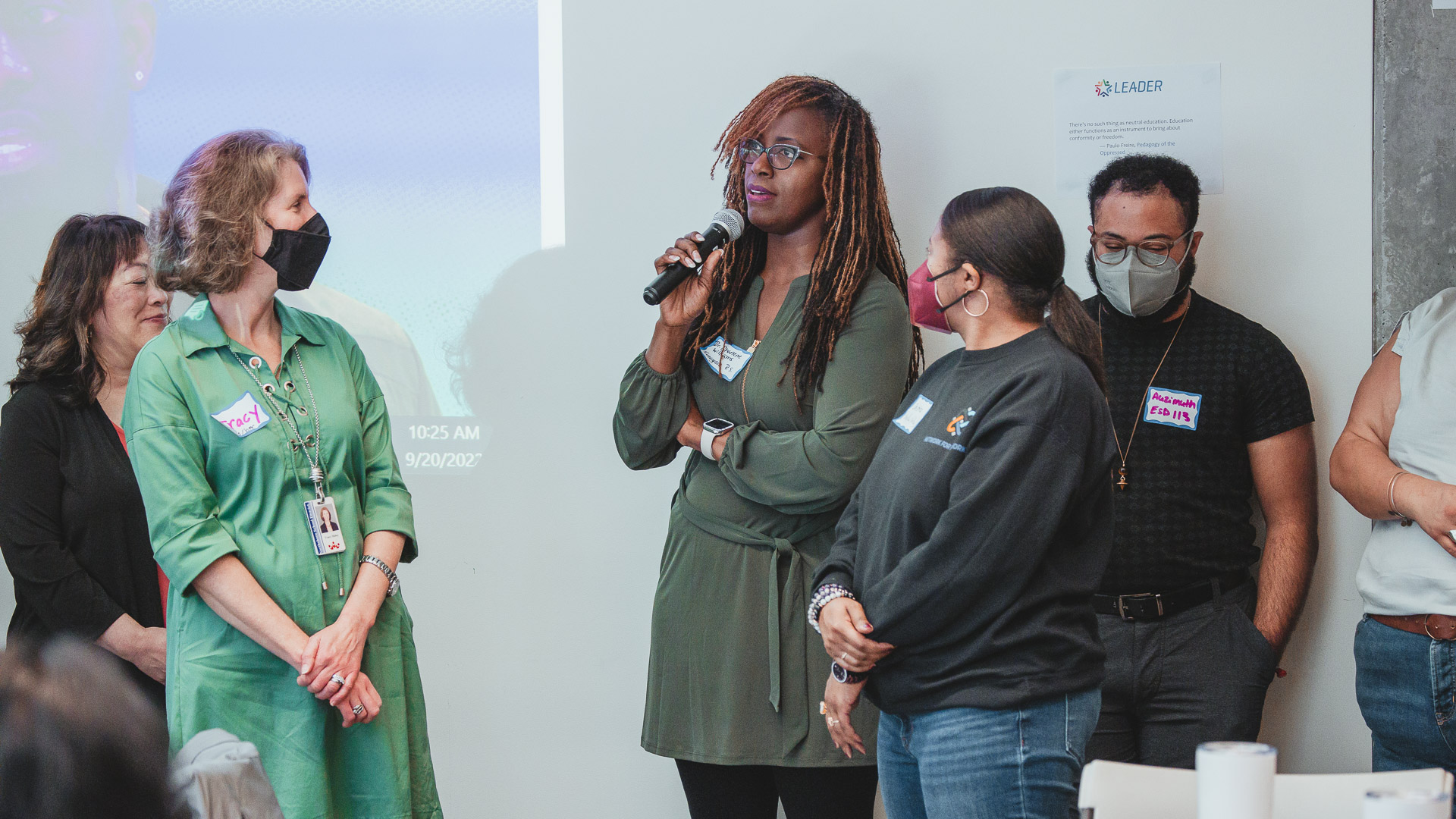
“You can feel like you are on an island in this building with 75% native, diverse students,” says Chelsea Craig, assistant principal at Quil Ceda Tulalip Elementary. “I am desperate for teachers of color, educators of color in all capacities. Our kids are sitting here waiting for this.”
Craig is one of the core team members of the UW-Bothell/City U LEADER Initiative coalition. Straddling two Educational Service Districts (ESDs) and including 14 entities across Snohomish and North King Count, they are bringing together their efforts to diversify the educator workforce. University of Washington Associate Professor Allison Hintz talks about how generative the process has been in forming the coalition and beginning to collaborate. She also talks about the challenges, not least of which is the urgent need for dramatic, long-overdue change.
Partners from the Northshore School District hear it directly from their students. “Student voice is a key element,” says Ranna Harb, Northshore School District’s Racial and Educational Justice specialist. “Day in and day out, students are saying what they want, and we need to make sure to hire teachers that look and sound like them, who can represent the diverse communities they come from.”
This loud call from students sits within the larger context of ongoing advocacy work. “There’s always extreme urgency around this work because BIPOC communities have been fighting for far too long to advance this work,” says Ayva Thomas, director of Racial and Educational Justice at the Northshore School District.
Amid this urgency is a clear understanding of the time it takes to do this work in community and relationship with conversations around trauma and healing and action related to power dynamics. “Time is the one resource we never have enough of,” says Tracy Meloy, core member and chief leadership and strategy officer at the Northshore School District. “To have trust and build relationships among every coalition member, it will take more than the two years we have for planning.”
Hintz talks about the challenges of bringing people to the table who are essential and have pressures on their time, like school-based administrators. “As a university-based partner in this project, I can most-often commit to a standing meeting at 8:30 every Thursday,” she says. “Chelsea, on the other hand, may be leading morning assembly at her school, and then something happens where she is needed; she’s working in the day-to-day life of a school community. It raises questions about how to build structures so school-level leaders can lead in systems-level transformation.”
Part of the tension and struggle of this LEADER work is finding new ways of working around such roadblocks, including dominant cultural expectations about getting enough done. “There’s the issue of time and productivity, yet if we miss hearing people’s voices and dreams, we risk going on and creating something without all perspectives and knowledge of the coalition’s partners,” says Hintz. “But, if we’re going to do something different, we’re going to have to create space for that.”


One way to create space is by seeing and listening where space is already being made. For example, Northshore School District had a convening in March for students called Student Justice Conference with the theme, “Unapologetically Dreaming, Designing & Doing for Justice.” Harb talks about how this kind of gathering opens new ways forward. “It relates to radical dreaming with the mindset of curiosity. If there was no budget, if you could have any school system without limitations, what would it look like beyond what we know and how we know it?”
Another way of creating space is to build on existing relationships. “Each of us has networks in our own spaces — Chelsea and I are in the same doctoral program. One way to do it is to have voices speaking in multiple spaces and bringing it back to other teams,” says Thomas.
Several months into the planning portion of the grant, the core group continued to grapple with the tension of making space for the missing voices at the group’s standing meeting. They posed the question to member Chelsea Craig — how can we best connect with you in your everyday role to do this work together? “Come to our morning assembly anytime,” she said.
Within a few days, nearly all the core collaborators were at the Quil Ceda Tulalip Elementary assembly, seeing the traditional opening, then conversing with Craig and her team. “We got to listen and understand their dreams for learning and teaching in their community,” says Hintz. “They shared the representation of the cedar tree, their ecosystem, the medicine wheel, and elder practices.”
Hintz found the discussion to be transformative. “Visiting, hearing and discussing their values holistically, socially, emotionally and spiritually allowed us to understand better the powerful work happening and how we could think alongside each other to make transformational change grounded in community dreams.”
Craig adds another call to action. “Our education system is so entrenched in colonized ways of thinking and red tape that we need the people in power to get out of the way of what needs to happen,” she says.
Thomas points out the importance of the individual in the collective process of making way for change. “Authentic community building is understanding the power and positionality that we bring to any space,” she says. “If we’re all committed to this effort, then that means processing our roles and responsibilities. We’re not our titles. We’re racialized and identity-based human beings in social contexts, and we must confront, acknowledge, and reflect on that to build forward this collective that we aspire to be.”
Find out how you can Get Involved, explore our virtual Events, or sign up below for news updates about the LEADER initiative.
Get the latest — subscribe to our electronic newsletter.
By signing up you agree to receive occasional communications from College Spark Washington. You can unsubscribe at any time. We respect your right to privacy. Please review our Privacy Policy
